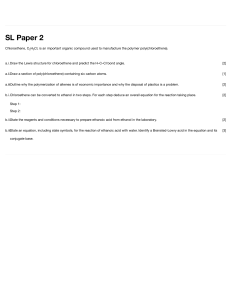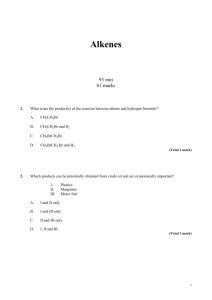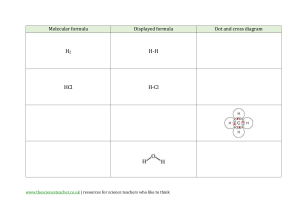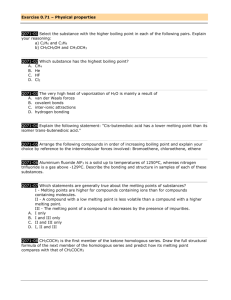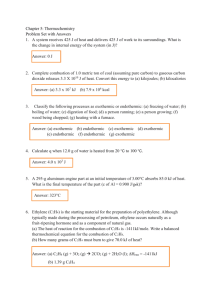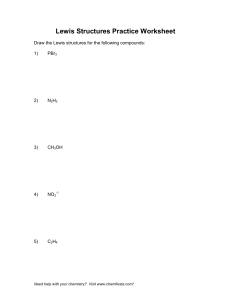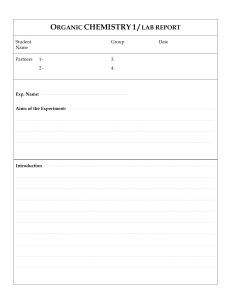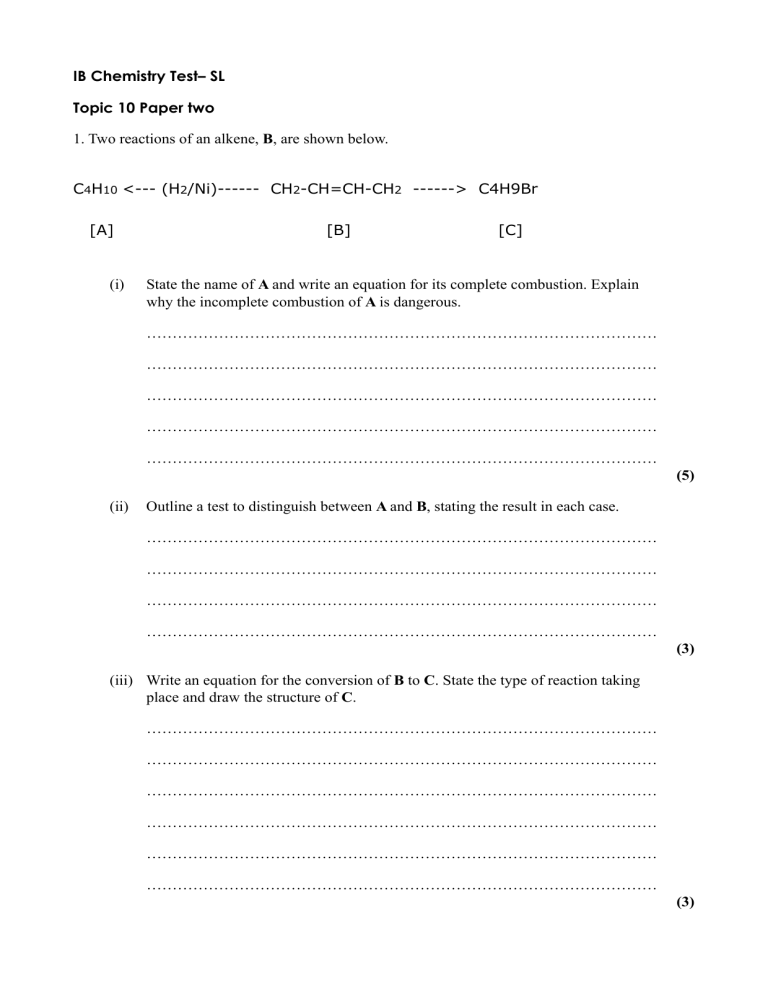
IB Chemistry Test– SL Topic 10 Paper two 1. Two reactions of an alkene, B, are shown below. C4H10 <--- (H2/Ni)------ CH2-CH=CH-CH2 ------> C4H9Br [A] (i) [B] [C] State the name of A and write an equation for its complete combustion. Explain why the incomplete combustion of A is dangerous. ……………………………………………………………………………………… ……………………………………………………………………………………… ……………………………………………………………………………………… ……………………………………………………………………………………… ……………………………………………………………………………………… (5) (ii) Outline a test to distinguish between A and B, stating the result in each case. ……………………………………………………………………………………… ……………………………………………………………………………………… ……………………………………………………………………………………… ……………………………………………………………………………………… (3) (iii) Write an equation for the conversion of B to C. State the type of reaction taking place and draw the structure of C. ……………………………………………………………………………………… ……………………………………………………………………………………… ……………………………………………………………………………………… ……………………………………………………………………………………… ……………………………………………………………………………………… ……………………………………………………………………………………… (3) 2. The compound C2H4 can be used as a starting material for the preparation of many substances. (a) Name the compound C2H4 and draw its structural formula. ……………………………………………………………………………………… ……………………………………………………………………………………… ……………………………………………………………………………………… (2) (b) In the scheme below, state the type of reaction and identify the reagent needed for each reaction. A B C2H4 → CH3CH2OH → CH3COOH ……………………………………………………………………………………… ……………………………………………………………………………………… ……………………………………………………………………………………… ……………………………………………………………………………………… (4) (c) C2H4 can be converted into one of the compounds below in a single step reaction. C2H3Cl C2H4Cl2 Draw the structural formula for each of these compounds and identify the compound which can be formed directly from C2H4. ……………………………………………………………………………………… ……………………………………………………………………………………… ……………………………………………………………………………………… (3) (d) One of the two compounds in (c) has an isomer. Draw the structural formula of the isomer and explain why it can not be formed directly from C2H4. ……………………………………………………………………………………… ……………………………………………………………………………………… ……………………………………………………………………………………… ……………………………………………………………………………………… (2) 3. The plastic PVC, poly(chloroethene), is made from the monomer chloroethene, C2H3Cl, by a polymerization reaction. (i) Draw the structural formula of chloroethene. ……………………………………………………………………………………… ……………………………………………………………………………………… ……………………………………………………………………………………… ……………………………………………………………………………………… (1) (iii) Draw the structure of the repeating unit of poly(chloroethene). ……………………………………………………………………………………… ……………………………………………………………………………………… ……………………………………………………………………………………… ……………………………………………………………………………………… (1) (iv) Explain why monomers are often gases or volatile liquids, whereas polymers are solids. ……………………………………………………………………………………… ……………………………………………………………………………………… ……………………………………………………………………………………… ……………………………………………………………………………………… (2) 4. Chlorine and ethane react together to form chloroethane. (a) State the condition needed for the reaction to occur. .................................................................................................................................... .................................................................................................................................... (1) (b) Write equations to represent initiation, propagation and termination steps in the reaction. .................................................................................................................................... .................................................................................................................................... .................................................................................................................................... .................................................................................................................................... .................................................................................................................................... .................................................................................................................................... .................................................................................................................................... .................................................................................................................................... .................................................................................................................................... .................................................................................................................................... (4) (Total 5 marks) 5. CH3COCH3 is the first member of the ketone homologous series. Draw the full structural formula of the next member of this homologous series and predict how its melting point compares with that of CH3COCH3. .................................................................................................................................... .................................................................................................................................... .................................................................................................................................... .................................................................................................................................... .................................................................................................................................... .................................................................................................................................... .................................................................................................................................... .................................................................................................................................... (Total 2 marks) 6. CH3COCH3 can be prepared in the laboratory from an alcohol. State the name of this alcohol, the type of reaction occurring and the reagents and conditions needed for the reaction. (Total 5 marks) .................................................................................................................................... .................................................................................................................................... .................................................................................................................................... .................................................................................................................................... .................................................................................................................................... 7. Ethanol and ethanoic acid can be distinguished by their melting points. State and explain which of the two compounds will have a higher melting point. .................................................................................................................................... .................................................................................................................................... .................................................................................................................................... 8. State the name and draw the structural formula of the product formed by reacting Ethanol and ethanoic acid in the presence of concentrated sulphuric acid , name the functional group. .................................................................................................................................... .................................................................................................................................... .................................................................................................................................... ....................................................................................................................................
